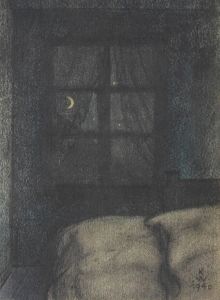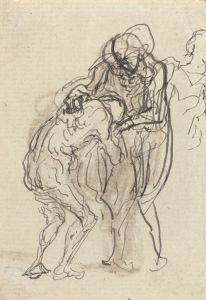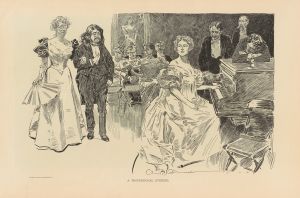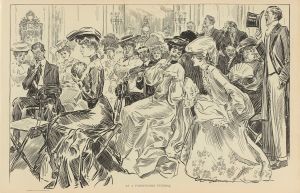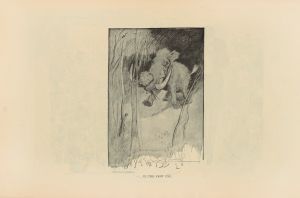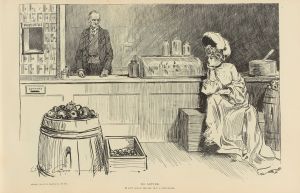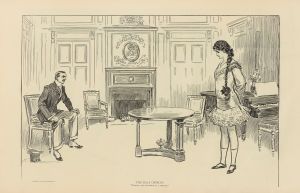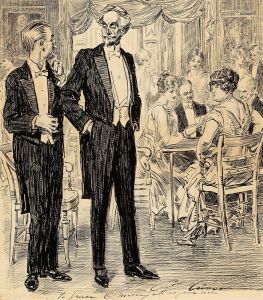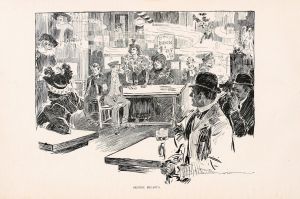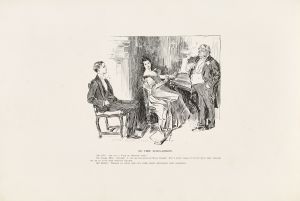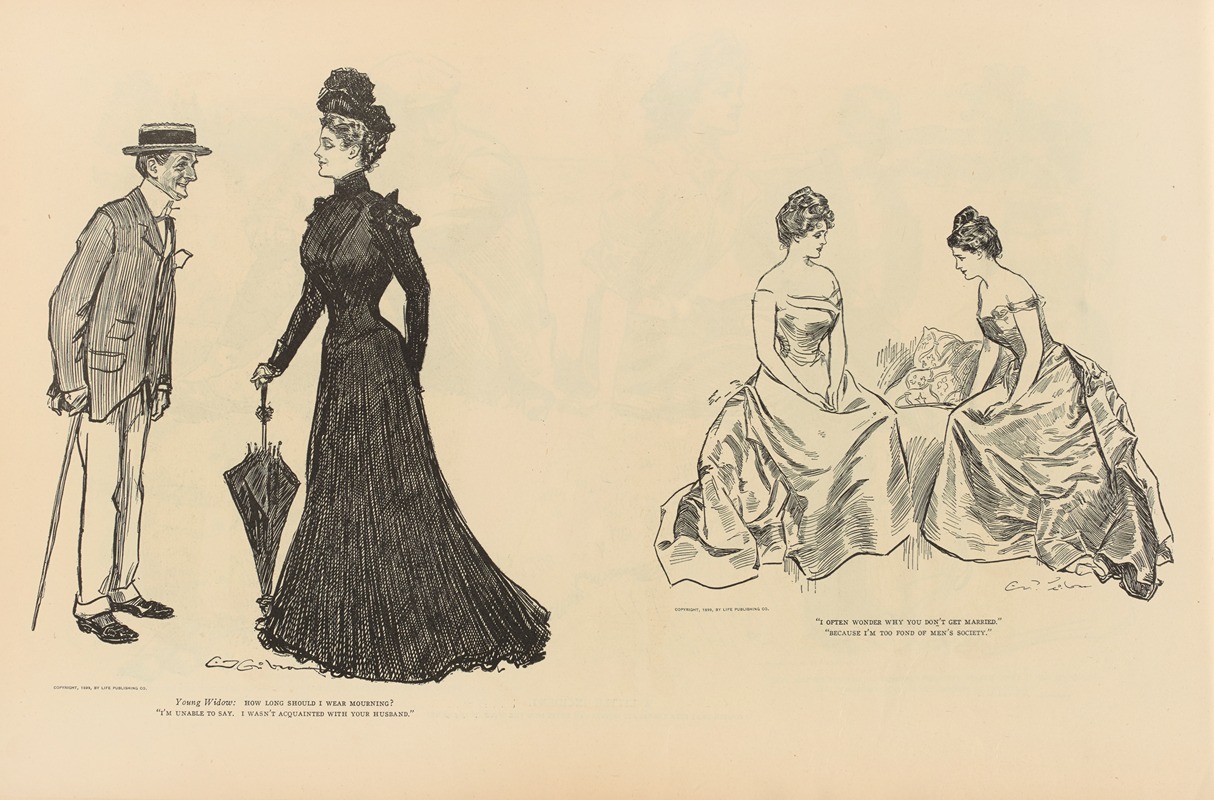
Young Widow; how long should i wear mourning
A hand-painted replica of Charles Dana Gibson’s masterpiece Young Widow; how long should i wear mourning, meticulously crafted by professional artists to capture the true essence of the original. Each piece is created with museum-quality canvas and rare mineral pigments, carefully painted by experienced artists with delicate brushstrokes and rich, layered colors to perfectly recreate the texture of the original artwork. Unlike machine-printed reproductions, this hand-painted version brings the painting to life, infused with the artist’s emotions and skill in every stroke. Whether for personal collection or home decoration, it instantly elevates the artistic atmosphere of any space.
Charles Dana Gibson was an influential American illustrator, best known for his creation of the "Gibson Girl," a representation of the idealized American woman at the turn of the 20th century. Among his numerous works, "Young Widow; How Long Should I Wear Mourning?" stands out as a poignant illustration that captures the societal norms and personal dilemmas faced by women during that era.
Created in the early 20th century, this illustration reflects the cultural and social expectations surrounding mourning practices. During this period, mourning customs were rigidly defined, particularly for women. Widows were expected to adhere to a strict code of dress and behavior, which included wearing black clothing for a specified period. The length of mourning varied depending on the relationship to the deceased, with widows often expected to mourn for up to two years.
Gibson's illustration depicts a young widow contemplating her future and the societal expectations imposed upon her. The image is characterized by Gibson's signature style, which combines elegance with a subtle critique of social norms. The young widow is portrayed in a moment of introspection, her expression suggesting a mix of sadness, contemplation, and perhaps a hint of rebellion against the constraints of her situation.
The "Gibson Girl" was a cultural icon that represented a new standard of femininity—one that was independent, confident, and socially active. In "Young Widow; How Long Should I Wear Mourning?" Gibson extends this concept by highlighting the tension between individual desires and societal expectations. The illustration invites viewers to consider the emotional and social challenges faced by women who were navigating the complexities of loss and societal pressure.
Gibson's work was widely published in magazines such as Life, Harper's Weekly, and Scribner's, reaching a broad audience and influencing public perceptions of gender roles. His illustrations often contained a satirical edge, using humor and irony to comment on the social issues of the day. "Young Widow; How Long Should I Wear Mourning?" is no exception, as it subtly critiques the rigid mourning customs that dictated women's lives.
The impact of Gibson's work extended beyond the pages of magazines. His illustrations contributed to the evolving discourse on women's rights and social roles, reflecting and shaping the cultural landscape of the early 20th century. By portraying women as complex individuals with their own thoughts and desires, Gibson challenged the traditional narratives and encouraged a more nuanced understanding of femininity.
In summary, "Young Widow; How Long Should I Wear Mourning?" by Charles Dana Gibson is a significant work that captures the intersection of personal grief and societal expectations. Through his art, Gibson not only depicted the beauty and elegance of the "Gibson Girl" but also engaged with the social issues of his time, leaving a lasting impact on American culture and the portrayal of women in art.







